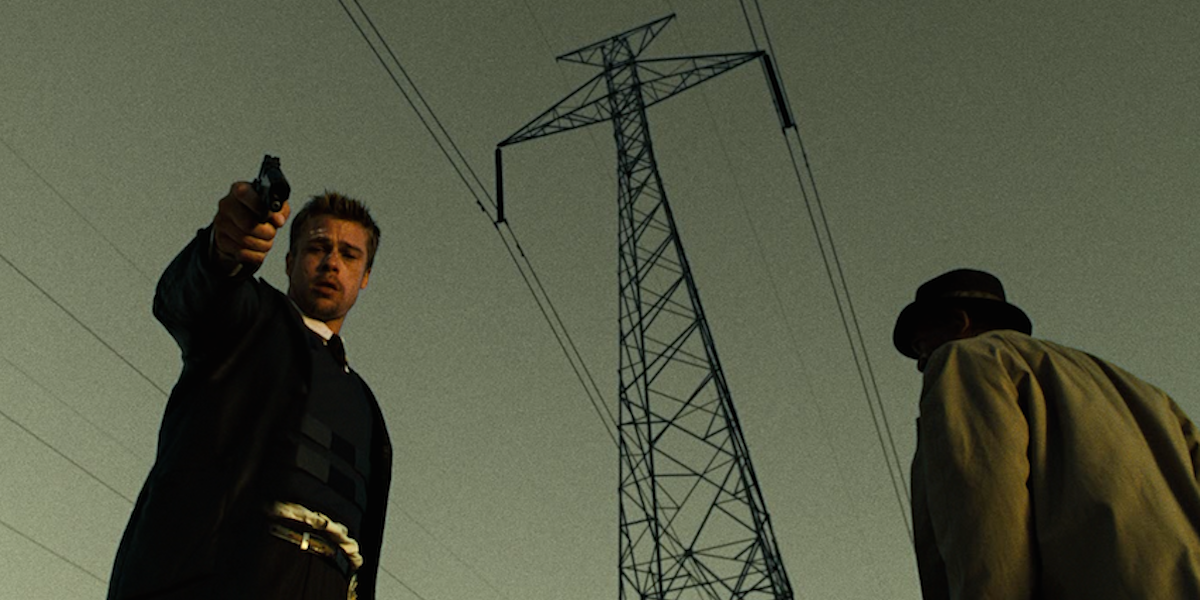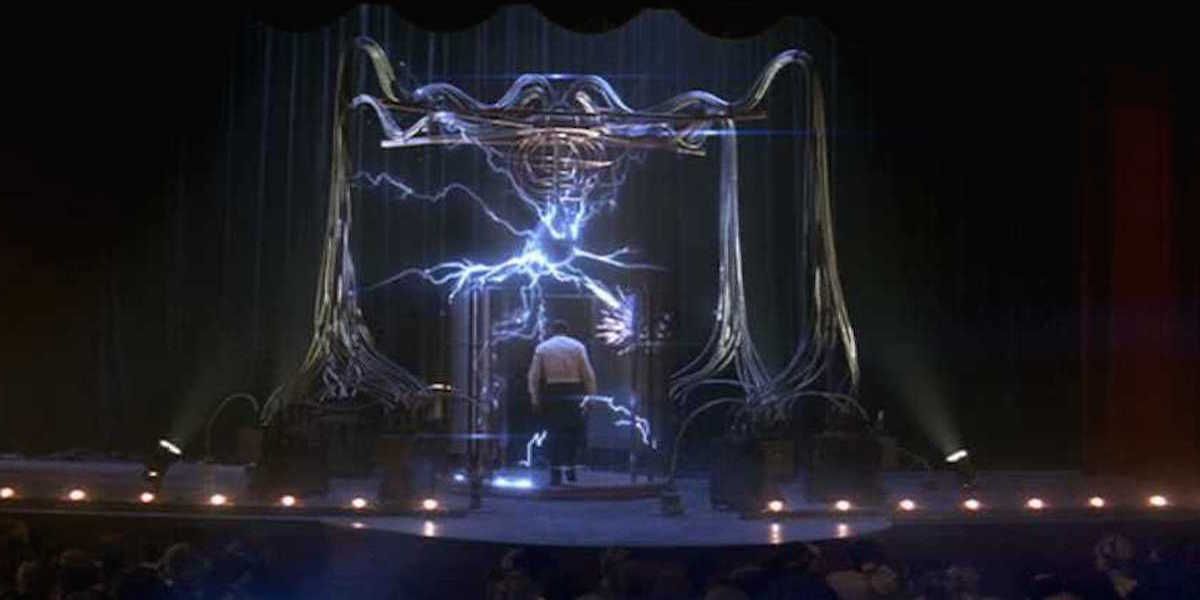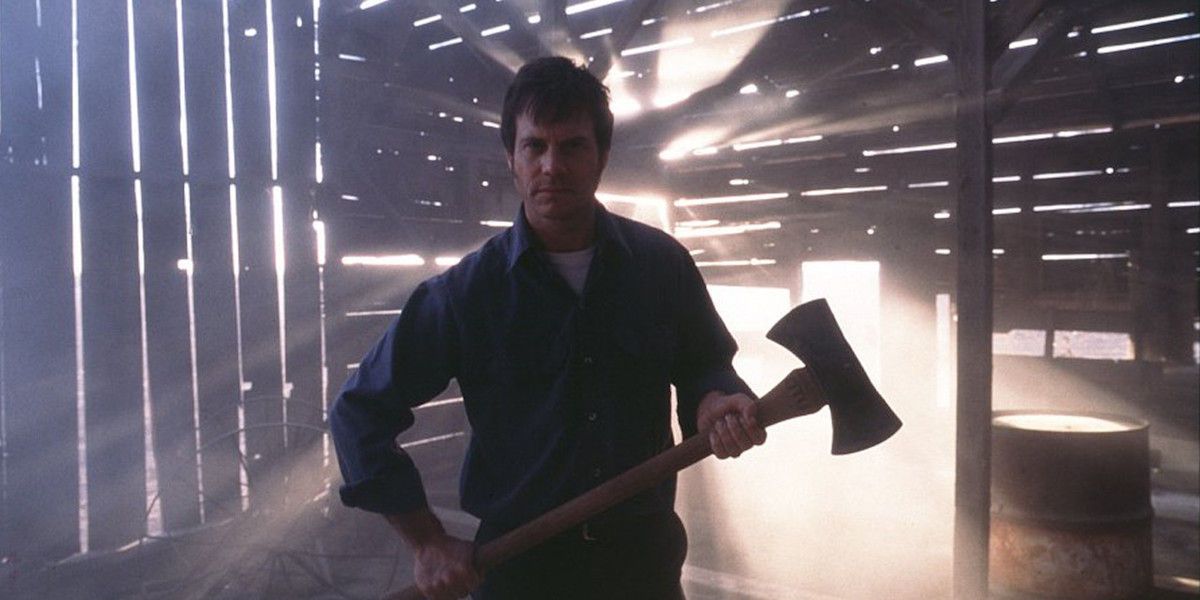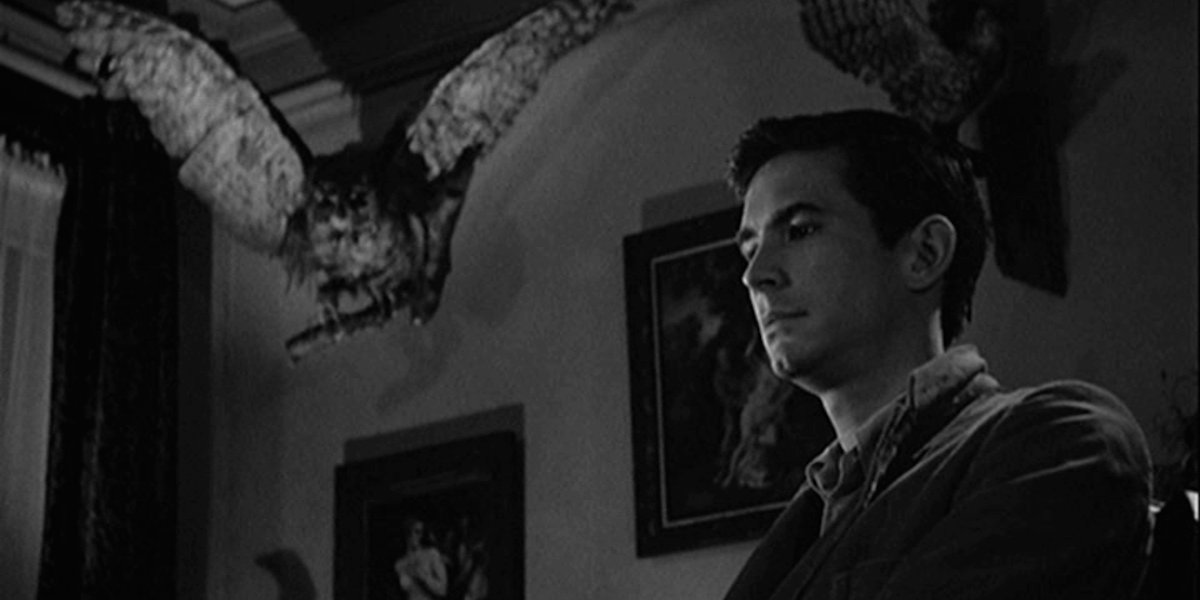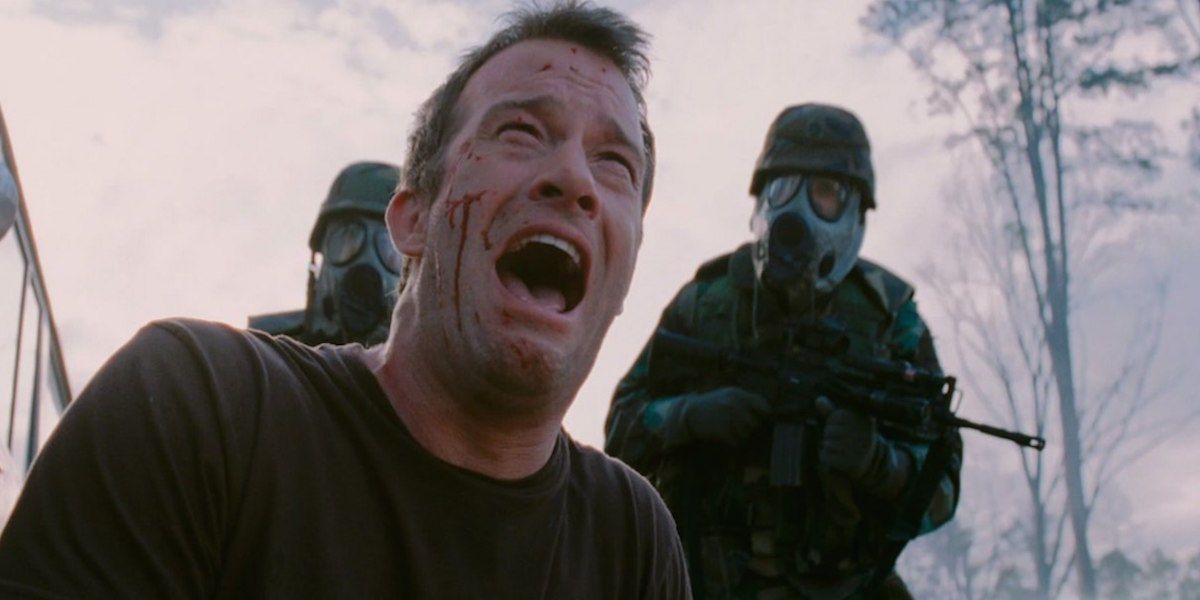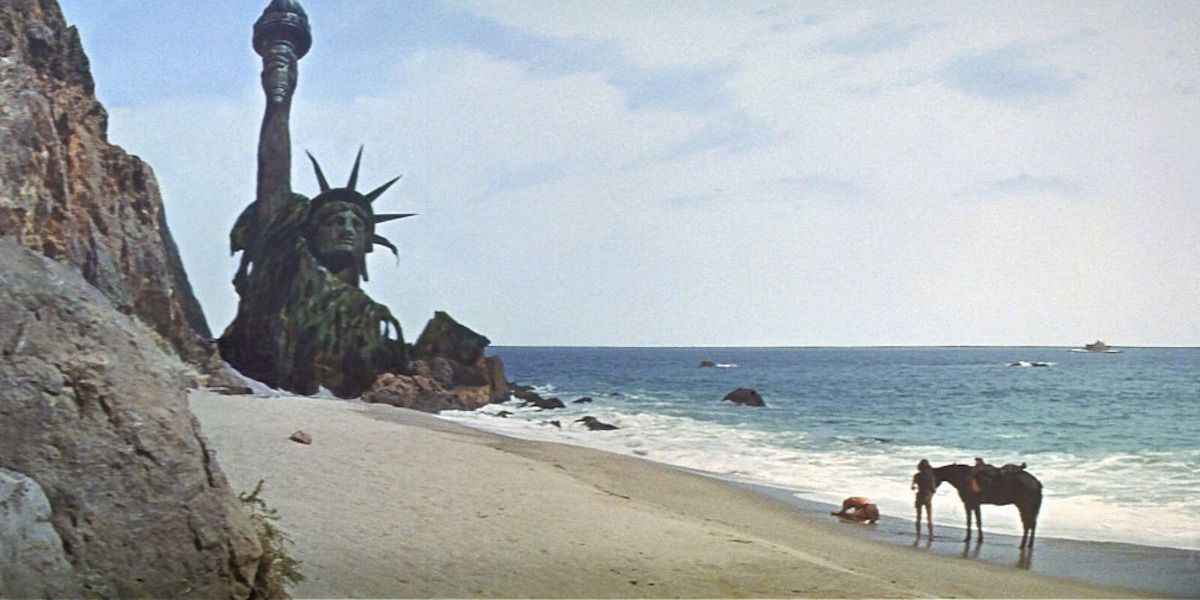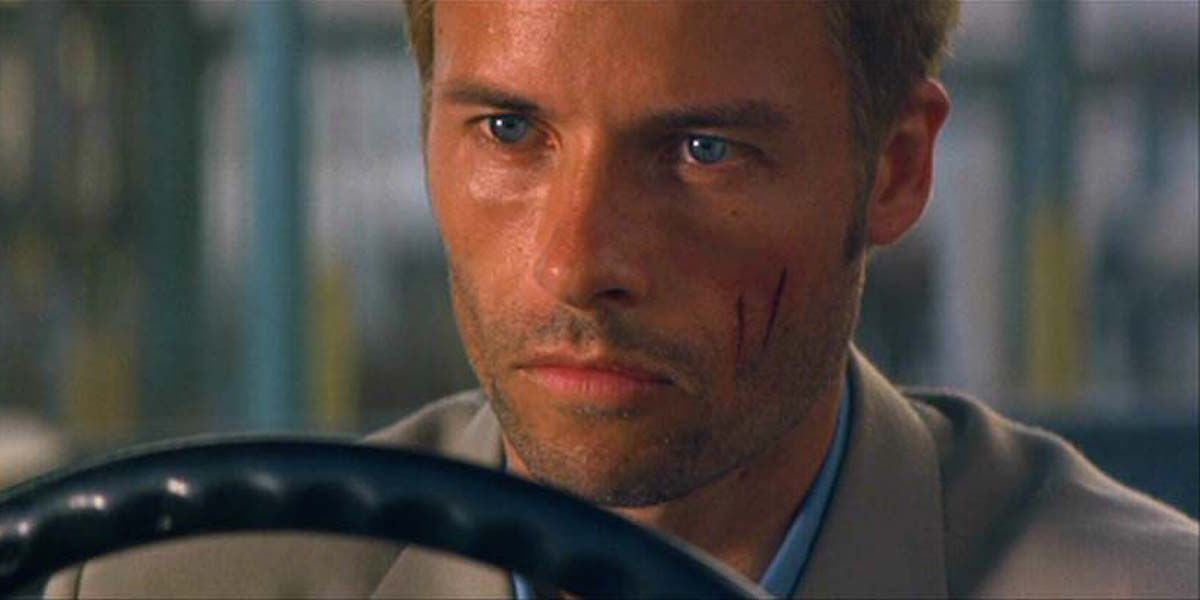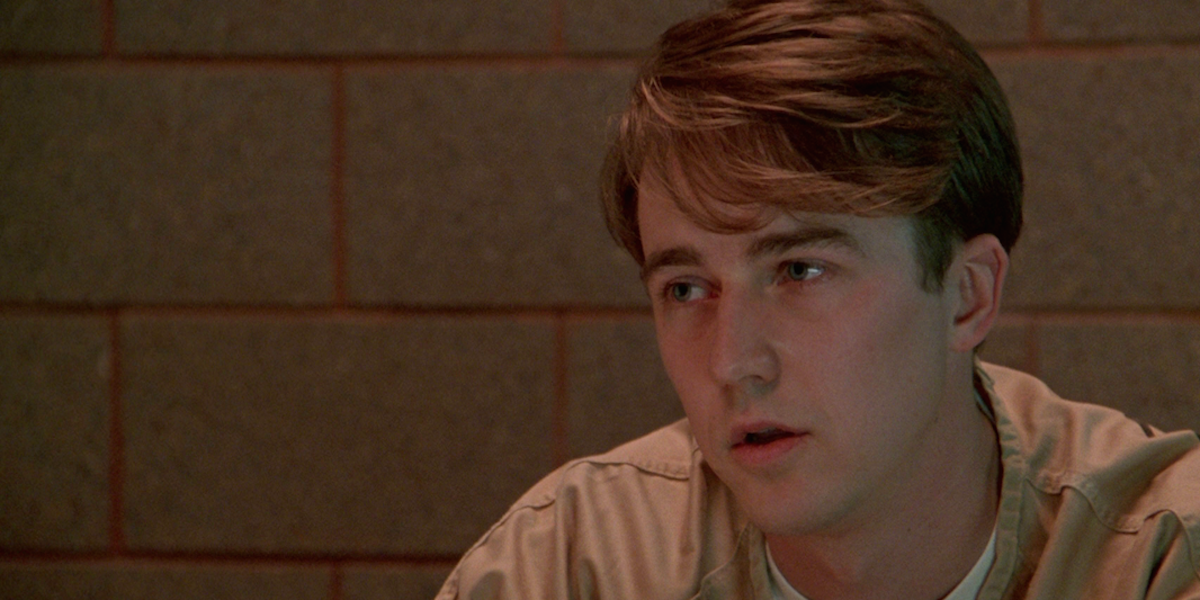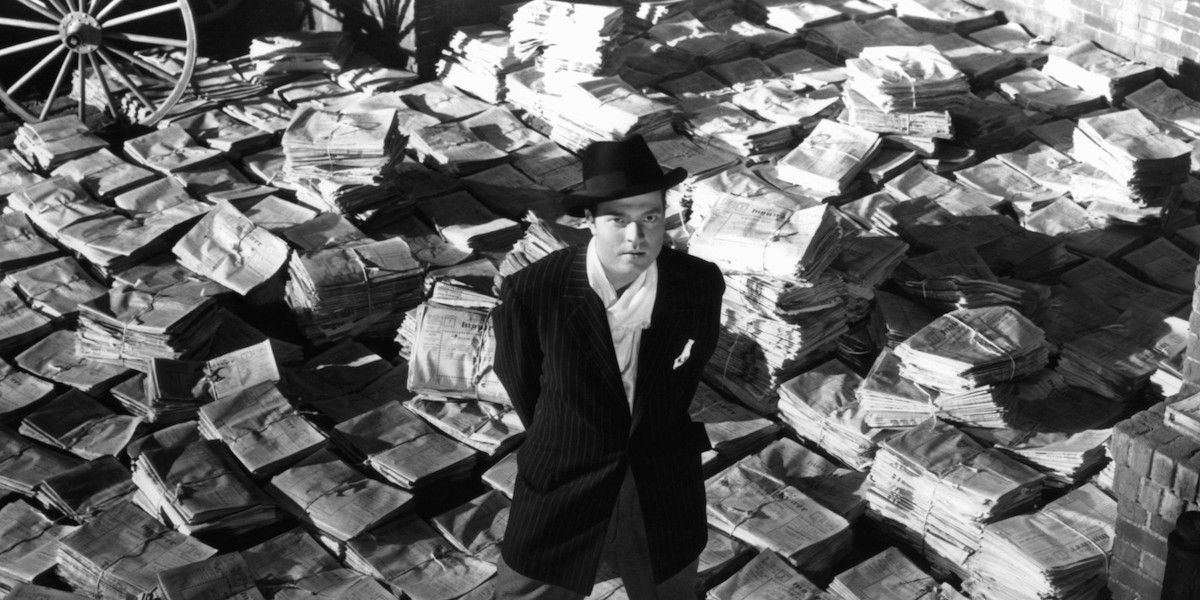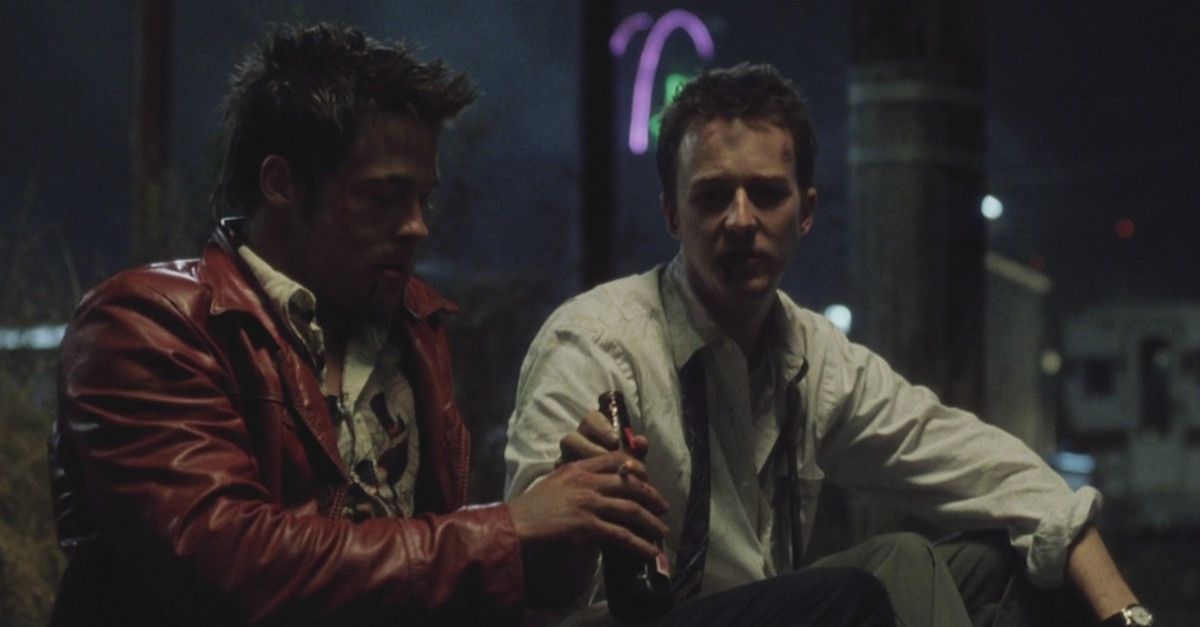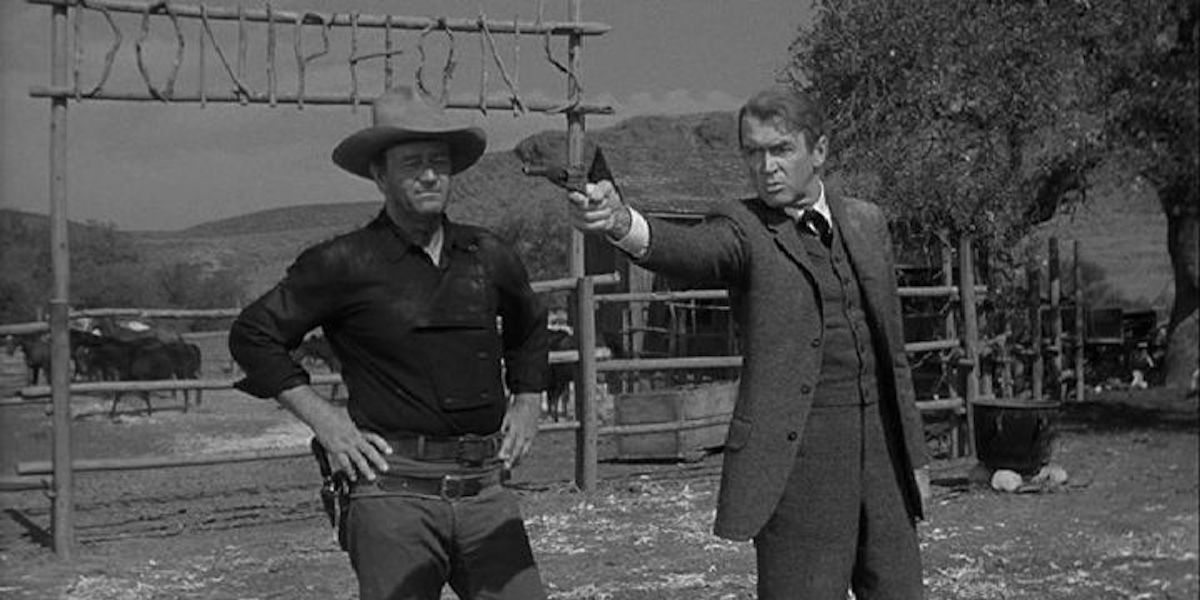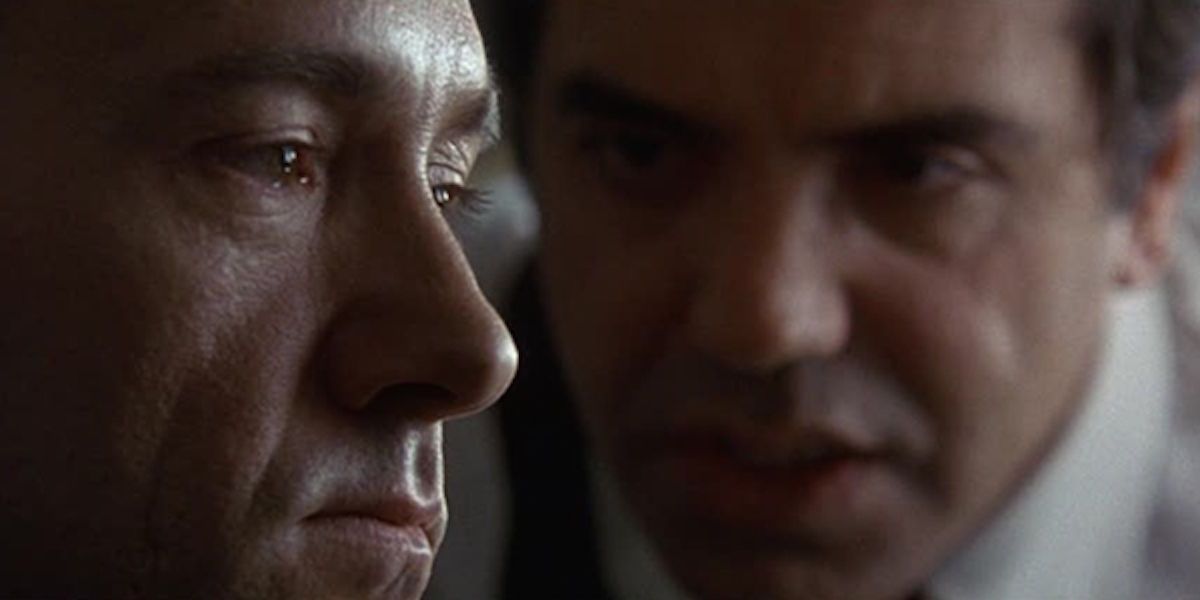In 1996 M. Night Shyamalan, a pretty much unknown director, helmed a film about a boy who could (say it with us) see dead people. The twist at the end of The Sixth Sense was one audiences talked about for months, and the film itself was even nominated for six Academy Awards (including Best Picture, Best Director, and Best Original Screenplay).
Shyamalan then went on to write and direct a series of movies with major plot twists, each becoming more confusing and pointless than the last. Though his name is synonymous with the surprise ending and the unforeseen narrative revelation, the truth is that a good plot twist isn’t just a turn in the story the audience didn’t see coming. A brilliant twist should make you go “Ohhh!” not “Huh?” and somewhere between Unbreakable and The Village, it seems like Shyamalan forgot this.
If you’re really looking to watch a movie with the kind of exceptional plot twist you’ll never forget – because you’ll sort of feel like you should have seen it coming all along – you can leave Shyamalan’s later work alone and try one of these fifteen films.
SPOILER WARNING
These descriptions, obviously, will give away important plot points in the films described, so if you haven’t seen them yet - you’ve been warned.
SEVEN (1995)
The Plot: In the 1995 horror film Seven (or Se7en, if you’re feeling fancy), Detectives Somerset and Mills (Morgan Freeman and Brad Pitt) are partnered and given an interesting case: to find a serial killer whose murders mirror the seven deadly sins. There’s Gluttony, Sloth, Lust, you get it… Eventually, they begin following leads on a man named John Doe (Kevin Spacey), who then shows up at the police station to give himself up. With two murders still unaccounted for, Doe promises to show the detectives where the victims are and confess. After they arrive in a remote area, a box is delivered to them.
The Twist: Inside the box is Mills’ wife’s head. Doe murdered Tracy (Gwyneth Paltrow) because he was jealous of Mills’ life, making him Envy. He asks if Mills will become his final victim, Wrath, by killing him and spending life in prison. When he reveals that Tracy was pregnant, Mills complies. The film was a commercial success, partially because of the shocking twist that had everyone talking.
THE PRESTIGE (2006)
The Plot: In this Christopher Nolan film, rival magicians Angier (Hugh Jackman) and Borden (Christian Bale) have a long history of bad blood, beginning when Angier blamed Borden for the accidental death of his wife during a show. They part ways and Borden, with his illusion designer Fallon, creates a magic trick called “The Transported Man,” in which he enters one cabinet and exits another immediately after. With the help of Nikola Tesla (David Bowie), Angier creates his own version of the trick with a mysterious machine. The story culminates with Borden finding a tank where Angier is drowning and being accused of Angier’s murder.
The Twist: The story actually has two twists, both based on the reveal of how the two men performed their separate tricks. Angier’s machine was actually a cloning device, and his clones were killed after each performance, drowned in a water tank. Borden’s twist is simpler but more surprising: he was actually identical twins, the two men each living half as Borden and half as the mysterious Fallon. Though it isn't Nolan's best known film, The Prestige did well at the box office and received critical acclaim.
FRAILTY (2001)
The Plot: Frailty, directed by and starring Bill Paxton, is a psychological thriller about a man (Paxton) living with his two sons, Fenton and Adam, who claims that he has been summoned by God to kill people who are actually demons. The story is told mostly through flashbacks when, years later, an adult Fenton (Mattew McConaughey) relates it to an FBI agent (Powers Boothe). Fenton says his brother carried on this series of murders before committing suicide and that he will show Agent Doyle where the bodies are buried in a rose garden of his hometown.
The Twist: Once they reach the rose garden, Fenton confesses to actually being Adam. He tells Doyle that he lured him there because his name was last on the list. But then, in a double-twist, it is revealed that Adam truly does have the power to see into a person’s soul and that Agent Doyle actually murdered his mother and must be killed. Afterwards no one remembers seeing Adam in the FBI office, as his actions truly were the result of some divine intervention. Though Frailty was a relatively small film, it received considerable critical acclaim, especially for Paxton's dual work as actor/director.
PSYCHO (1960)
The Plot: In this classic Hitchcock film, Marion Crane (Janet Leigh) embezzles money from her boss and skips town. When she decides to stay at a hotel for the night, she meets Norman (Anthony Perkins) who owns the hotel with his mother. Norman spies on Marion through a peephole, and his mother murders her in the shower. This sets in motion a chain of events where Norman is unable to control his mother and horrified by each of her deeds that follow Marion’s killing.
The Twist: Norman’s mother is actually dead; he killed her years ago and keeps her mummified body in a wheelchair. He has murdered multiple women after developing dissociative personality disorder and adopting his mother’s personality. The most chilling moment comes when Norman, psychologically trapped in the personality of his mother, thinks to himself, “They’ll say, ‘Why, she wouldn’t even harm a fly!’” Hitchcock took out newspaper advertisements asking audiences not to give away the ending and assuring that no one would be let into the theater after the film had started, a gimmick that brought people to see the movie in droves.
THE MIST (2007)
The Plot: After a violent storm rocks a small suburban community, an eerie mist begins to roll in. David (Thomas Jane) takes his young son Billy (Nathan Gamble) to a store to get supplies, causing them to become trapped in the store with a group of other people. Over time, the characters realize there are creatures in the mist, waiting to kill and devour all of them, but things inside the store become even more frightening as the creatures break in and the survivors turn on each other. David, his son, and several other survivors escape and drive away, armed only with a gun as the monsters in the mist continue to attack their vehicle.
The Twist: When the car finally runs out of gas, they agree to a suicide pact. Because there are four bullets and five people, David kills everyone else, including his son, and steps out of the car to meet his fate. In one of the grimmest twists in movie history, the mist then dissipates and David is rescued by the army, whose tanks roll right past him. Once he realizes what he has done, David screams. The film is based on a Stephen King short story, the ending of which King fully supports and feels that "anybody who reveals the last five minutes... should be hung from their neck until dead." Oops. Sorry, Mr. King.
PLANET OF THE APES (1968)
The Plot: In this science fiction film, a group of astronauts crash on a planet after being in hibernation on their ship. When they discover that the planet’s soil is unable to sustain life, they are shocked to find plants, an oasis, and eventually, primitive humans. Astronaut Taylor (Charlton Heston) is then captured by a group of intelligent, ape-like creatures who are the planet's dominant species. The apes put him on trial, killing some of his fellow astronauts and subjecting others to horrifying experiments. Once Taylor escapes, he is warned by the orangutan Dr. Zaius (Maurice Evans) that he may not like what he finds about the planet as he pursues answers.
The Twist: Upon finding ruins of the Statue of Liberty, Taylor realizes that the planet is actually Earth, and the humans destroyed it long ago in a thermonuclear war. He falls to his knees and screams, “You maniacs! You blew it up! Damn you!” The film spawned a number of sequels, two television shows, and a reboot series starting with Rise of the Planet of the Apes and leading to War of the Planet of the Apes, which will release in 2017.
MEMENTO (2000)
The Plot: Christopher Nolan's Memento tells the twisting tale of Leonard Shelby (Guy Pearce), a man who suffers from anterograde amnesia, or short-term memory loss. Leonard’s story is shown in reverse chronological order, in short, successive segments that change our perception of what preceded it (which actually happened in the future). Confusing? It makes more sense when you watch it. With the help of his friend and cop Teddy (Joe Pantoliano), Leonard attempts to track down one of the two men who murdered his wife. Leonard tattoos notes on his body in order to remember certain clues, one of them being a call to “Remember Sammy Jankis,” a man who had the same condition he does and accidentally killed his diabetic wife by giving her too many insulin injections.
The Twist: At the end of the film (which actually happened first chronologically), we discover that Teddy was leading Leonard to kill different men and reveals that Leonard was actually the one who killed his own diabetic wife. Leonard decides to leave himself clues that will lead him to kill Teddy rather than face this truth, and he does so...at the end of the film... but the beginning of the narrative.
PRIMAL FEAR (1996)
The Plot: Martin Vail (Richard Gere) is a successful defense attorney who defends an altar boy against charges of murdering an Archbishop of the Church. While Vail actually comes to believe that the alter boy Aaron Stampler (Edward Norton) is innocent, he finds a video tape of the Archbishop forcing Stampler to perform a sex act. Vail brings the information to Stampler, who reveals that he suffers from dissociative identity disorder and has a violent alter ego, Roy, who confesses to the murder. Stampler later has no recollection of this. Vail uses the information to put Stampler on the stand and Roy surfaces, threatening the prosecuting attorney. The judge (Alfre Woodard) finds him not guilty by reason of insanity.
The Twist: Vail visits Stampler in the final scene to tell him that he will be released soon after going to a hospital to get the help he needs. Stampler then accidentally lets it slip that the entire disorder was faked and that he killed the Archbishop out of revenge for what was done to him. When Vail asks, “So there never was a Roy?” Stampler tells him, “There never was an Aaron, counselor.” Norton was nominated for a Best Supporting Actor Oscar for his portrayal of Aaron Stampler.
CITIZEN KANE (1941)
The Plot: Orson Welles directed, co-wrote, and starred in this film about a newspaper tycoon Charles Foster Kane, whose last word (“Rosebud!”) confuses and interests others immensely upon his death. A reporter named Jerry Thompson (William Alland) is given the job of discovering the meaning of the word, and he interviews Kane’s estranged friends, ex-wife, and others to attempt to get to the bottom of the tale. Over the course of the story, the audience learns that Kane, once part of a poor family, was taken from his home to receive a proper education at the hands of a wealthy man, before eventually rising to power.
The Twist: Thompson is unable to find out the meaning of Rosebud. In the recesses of Kane’s large home, it is revealed that Kane's childhood sled, from a time in which he was truly happy, had "Rosebud" written across it. When discovered by Kane's former staff, it is confused for junk and burned along with many of his other possessions. Citizen Kane is still considered one of the greatest movies of all time.
THE CRYING GAME (1992)
The Plot: The Crying Game centers mostly around Fergus (Stephen Rea), a foot soldier in the IRA. Fergus and his unit capture Jody (Forest Whitaker), a British solider, and tell him that he will be killed if their demands are not met. Fergus is unable to kill Jody when the time comes, but Jody dies accidentally. As he had asked Fergus to find his girlfriend Dil (Jaye Davidson) and tell her of his death, Fergus does so and eventually falls in love with her.
The Twist: Though the film is full of a considerable amount of intrigue, the major twist comes early, when Fergus, about to have sex with Dil for the first time, discovers that she is transgender. The audience discovers this at the same time in one famous shot, which reveals Dil's male genitalia. In the end, Fergus cannot deny his love for her, and when Dil kills one of Fergus’ fellow IRA soldiers, he frames himself to protect her and goes to jail in her place. The twist itself has overshadowed much of the other aspects of the film in recent years, but it was nominated for six Academy Awards, winning Best Original Screenplay.
THE EMPIRE STRIKES BACK (1980)
The Plot: At the beginning of the second Star Wars film, Luke Skywalker (Mark Hamill) is visited by the spirit of his mentor Obi-Wan Kenobi (Alec Guinness) and told to train with the Jedi Master Yoda (Frank Oz). Meanwhile, Darth Vader (James Earl Jones) continues to search for him. During his training, Luke has a vision in which he kills Vader and removes his mask, revealing his own face underneath. He also has a premonition that his friends are in danger and leaves to save them, falling right into a trap Vader has set.
The Twist: When Luke arrives at Cloud City, he and Vader fight, leaving Luke maimed and dangling over an airshaft. In one of the most well-known twists in film history, Vader reveals that he did not kill Luke’s father, as Kenobi had originally told him, but in reality, Vader actually is Luke’s father. After Vader asks Luke to join him in ruling the galaxy, Luke refuses and drops down the shaft. Of course, he survives to return in Return of the Jedi, and now a new set of sequels we can only hope will be anywhere near as iconic.
GONE GIRL (2014)
The Plot: Based on the best-selling book by Gillian Flynn (whose novel Dark Places had its film debut in limited release earlier this month), Gone Girl follows the story of Nick Dunne (Ben Affleck), a man whose wife (Rosamund Pike) suddenly goes missing on the day of their fifth year anniversary. Over the course of the film, Nick becomes less and less sympathetic, and suspicions arise that perhaps he may have something to do with Amy’s disappearance after all.
The Twist: Amy is actually alive, and left Nick of her own accord, having planned to frame him for her murder after years of unhappy marriage. The twist happens early in the film and is followed by a series of events that lead Amy back to her husband, the two of them agreeing to remain together when Amy convinces Nick that he has no way out of their marriage. Despite receiving positive reviews, the film earned an Academy Award nomination for Pike but not for director David Fincher or for Flynn, who wrote the screenplay.
FIGHT CLUB (1999)
The Plot: In Fight Club, the narrator (Edward Norton) is a low-level office drone and insomniac who gets addicted to support group meetings for terminal patients. After having these meetings ruined by Marla Singer (Helena Bonham Carter), who is also faking illnesses, he meets Tyler Durden (Brad Pitt), with whom he soon builds an unlikely friendship and a secret club in which men pummel each other, partly just so thst they can "feel something." Tyler meets and sleeps with Marla and eventually begins to turn the club into a terrorist organization concerned with anti-corporatism and anti-materialism. Without warning, Tyler disappears, and the narrator goes looking for him.
The Twist: The narrator finally discovers that he is Tyler Durden and has – you guessed it – dissociative identity disorder. Evidently, there’s a lot of that going around. In a final struggle where Tyler is holding a gun to the narrator, the narrator realizes that he in fact is holding the gun and shoots himself through the cheek, destroying Tyler. Fight Club did not create the box office sensation 20th Century Fox was hoping for, but has since become a cult classic.
THE MAN WHO SHOT LIBERTY VALANCE (1962)
The Plot: In this classic Western film, Senator Ranse Stoddard (James Stewart) attends the funeral of a man named Tom Doniphon (John Wayne). A reporter (Joseph Hoover) ask Stoddard why he would want to pay respects to a man like Doniphon, and Stoddard tells the story of how they met. When Stoddard was only a young lawyer and new to the town, an outlaw named Liberty Valance (Lee Marvin) controlled the people through violence and fear, with Doniphon being one of the only men who would stand up to him. While Stoddard attempted to do so with lawful actions, a series of events led to Valance challenging Stoddard to a gunfight. Despite being a terrible shot, Stoddard shot and killed Valance, becoming a hero to the town.
The Twist: As Stoddard believed that he did indeed kill Valance, he struggled with feelings of guilt until Doniphon revealed that he actually shot Valance from an alleyway, firing at the exact moment when Stoddard fired. The reporter in present time decides not to reveal these facts and tells Stoddard, “When the legend becomes fact, print the legend.” The film did well commercially and is still considered to be one of director John Ford's best Westerns.
THE USUAL SUSPECTS (1995)
The Plot: Dave Kujan (Chazz Palminteri), a Customs agent, brings Verbal Kint (Kevin Spacey), a small-time con artist with a limp, into a local Californian police station for questioning in hopes of discovering the identity of the mysterious criminal Kaiser Söze. Kint tells the story of how he, three other criminals, and formerly corrupt police officer Dean Keaton (Gabriel Byrne) agreed to do a job for Söze who had vendettas against all of them. Kint explains that the job went wrong, and a man killed the others, including Keaton, before setting the ship they were all on board aflame. Kujan doesn’t believe his story and instead forces him to admit that Keaton was really Kaiser Söze.
The Twist: In what is arguably the greatest cinematic twist of all time, Kujan realizes that everything Verbal told him during the interview can be found in pictures, clippings, and items around the office, revealing that Kint lied about everything. As Kint walks to his car, long gone from the police station, he drops his limp. The film ends with Kint reciting a quote by French poet Baudelaire: “The greatest trick the devil ever pulled was convincing the world he didn’t exist.” Before the screen goes black, he adds, “And like that… he’s gone.”
-
Think of some other great plot twists that got you? List them in the comments. And if you're thinking of writing your own suspenseful film, consider following the example of these classics and create a twist worth revealing. Or just get Kevin Spacey or Edward Norton to star in it, and you should be fine.


